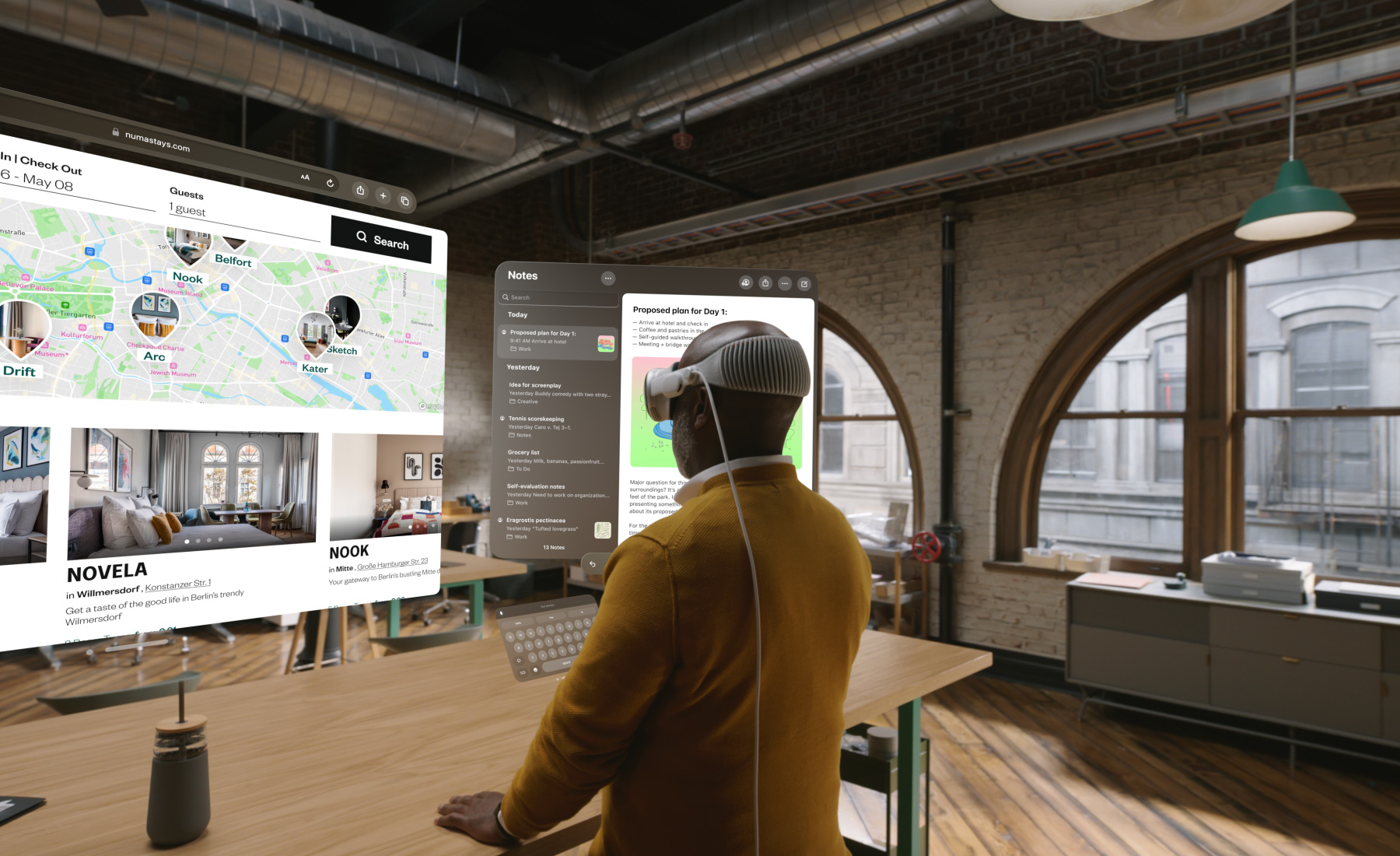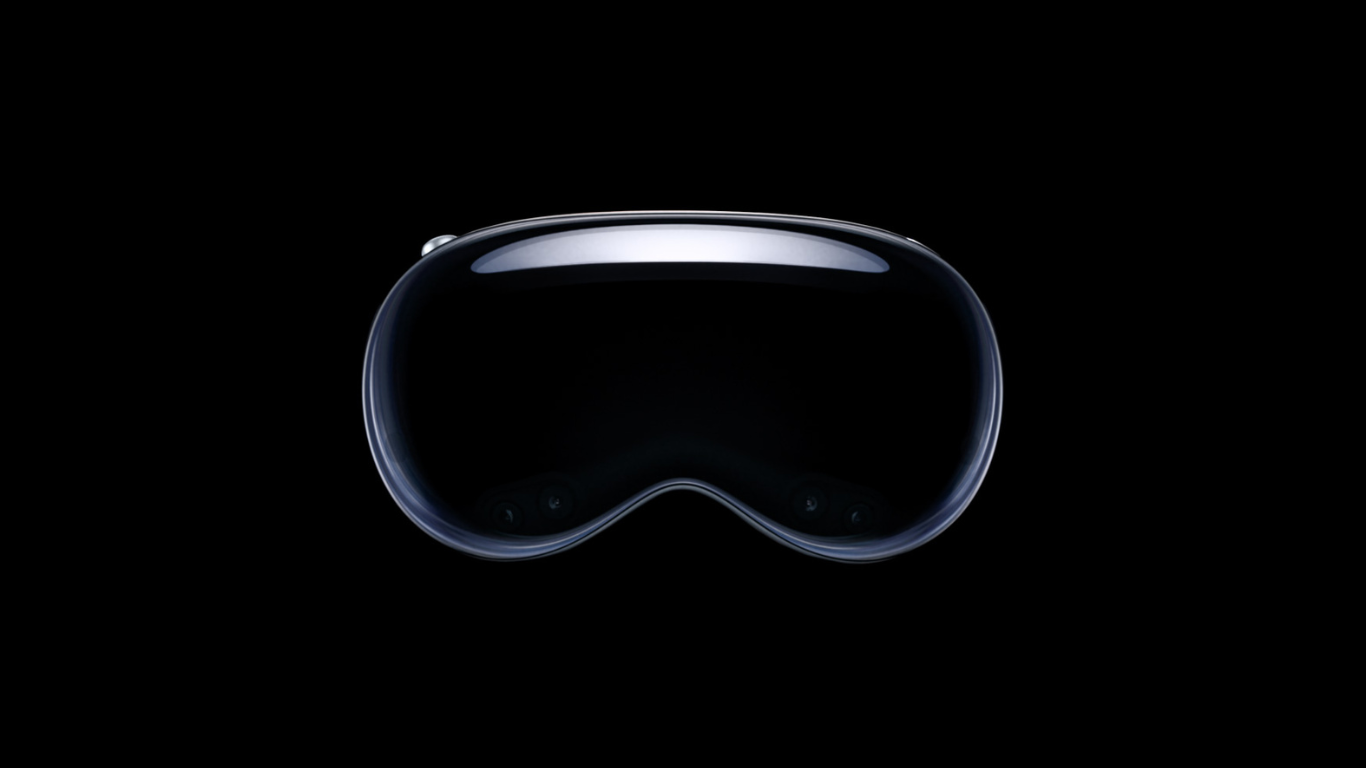- Apple’s long-awaited Vision Pro headset is on the brink of release, promising a groundbreaking “spatial computing” encounter that has the potential to redefine our interaction with digital content. However, the headset faces a setback to its allure as streaming giants Spotify and YouTube have chosen not to introduce dedicated Vision Pro apps. Instead, they steer users towards accessing their services through the Safari web browser.
- This raises the question of why these streaming services are hesitant to fully embrace Vision Pro’s ambitious vision for spatial computing. And what implications does this hold for you, considering the hefty price tag of $3,499 for this premium headset? In this comprehensive article, we will delve into the likely rationale behind Spotify and YouTube’s unexpected choices, assess the potential impact of the absence of dedicated apps on the Vision Pro experience, contemplate whether these companies might reconsider their stance in the future, and, most crucially, elucidate the significance of all these developments for you.
Why Spotify and YouTube Are Opting Out of Dedicated Vision Pro Apps

Limited Addressable Market
Given its lofty starting price of $3,499, Apple’s Vision Pro naturally targets only a small segment of the tech market. Analysts in the industry anticipate sales to reach only a few hundred thousand units in 2023, a stark contrast to the multimillion-unit sales of devices like iPhones.
For mass-market services such as Spotify and YouTube, which cater to billions of global users, developing dedicated apps for niche devices doesn’t seem worthwhile, regardless of the technology’s sophistication. The return on investment is lacking without achieving critical mass adoption over multiple millions.
This scenario echoes a past incident when YouTube famously declined to create a Windows Phone app in 2012, despite pleas from Microsoft’s executives. The meager market share of Windows Phone left YouTube unconvinced that there would ever be enough users to justify allocating limited engineering resources to the platform.
Vision Pro is likely to encounter similar skepticism from app developers, even with the Apple pedigree, until sales volumes significantly increase over time. However, the convoluted setup process, requiring an iPhone, and the limited use cases focused on enterprise may perpetually restrict its mainstream appeal.
This raises the question – why are streaming services hesitant to fully embrace Vision Pro’s ambitious vision for spatial computing? And what implications does this have for prospective buyers of this premium $3,499 headset? In this comprehensive article, we will delve into the likely reasons behind Spotify and YouTube’s surprising decisions, the potential impact of the lack of dedicated apps on the Vision Pro experience, whether these companies might alter their stance in the future, and most importantly, the significance of all this for you.
Limited Immersive Use Cases
Music and video applications may not experience significant transformative advantages when transitioning to dedicated VR/AR headsets codergo complete transformations in gameplay, visualization, and user interaction by fully utilizing the expanded canvas.
For platforms like Spotify and YouTube, the bottleneck primarily resides in audio and fixed rectangular video formats. These platforms may not perceive suf
mpared to simply displaying 2D screens. The fundamental experience of listening to music or watching videos remains largely unchanged even when the visual presentation transitions to 3D environments. This stands in contrast to gaming and specialized VR applications that can un
ficient additional value in porting such assets into VR compared to merely projecting them as floating 2D panels via the browser. Unless they decide to develop VR-specific music visualizers, interactive video portals, or custom virtual spaces in the future, the incentives to allocate limited developer resources to optimize for specific niches like Vision Pro will likely remain minimal, regardless of the advancements in Apple’s headset technology.
Competitive Concerns
YouTube, in particular, has a reason to exercise caution when it comes to prioritizing Apple’s platform, as it directly competes with Apple Music, Apple TV+, and various other Apple subscription services. Introducing an exclusive immersive YouTube app for Apple hardware might indirectly contribute to the promotion of Apple’s rival services, which seamlessly integrate into the company’s walled garden ecosystem. This ongoing dynamic has unfolded over decades, with Apple consistently giving preferential treatment to its own services over competitors on iOS.
Having confronted challenging antitrust battles globally, centered on these anti-competitive practices, YouTube is likely hesitant to enthusiastically bring TikTok-style short videos into Apple’s new domain without assurances of fair play. A comparable situation arose for Microsoft a decade ago, as it exerted considerable effort to create excellent YouTube apps for Windows Phone while facing slow development from Google, hindering adoption. Microsoft’s bitter experience highlighted the significant risks associated with depending on competitive third-party platforms that are beyond one’s control, and YouTube appears determined not to replicate such a scenario.
What Will the Lack of Dedicated Apps Mean for Your Experience?
If you don’t use customized Vision Pro apps, you’ll have to access YouTube and Spotify through the Safari web browser. However, this will offer a more basic and simplified experience compared to using the polished Apple Music or Apple TV+ apps, which are anticipated to debut alongside specialized third-party apps upon release.
Here’s specifically what you’ll be missing out on:
No Immersive Environments
Apple emphasizes Vision Pro’s capability to submerge users in imaginative virtual realms using positional tracking sensors that project visuals all around them. This enables objects to seamlessly blend into physical spaces with genuine spatial depth and scale. Specialized applications can customize these environments to align with their brands, such as creating virtual concert halls or simulating video production studios. However, when accessed through the Safari browser, content from YouTube and Spotify will appear as conventional 2D web pages and embedded videos. This results in a lack of access to the vibrant alternate landscapes and impressive visual effects. Instead, the content remains confined to a flat plane, failing to envelop the user.
No Interactive Elements
Well-crafted VR applications enable users to manipulate visual elements directly by using hand-tracking controllers for tasks such as grabbing, resizing, and repositioning. This seamless interaction allows for a smooth experience, allowing users to bring videos or images closer for detailed examination and easily push content aside when finished.
However, when confined to the Safari browser, interactions return to the less intuitive and more cumbersome cursor-based clicking and dragging, utilizing the iPhone trackpad. Each action demands excessive panning and pecking, lacking the hands-on manipulation that characterizes motion-controlled UIs. The gap between manual and motion-controlled interfaces remains significant.
No Enhanced Formats
Makers frequently upload VR-specific video formats on YouTube, providing viewers with an extraordinary sense of presence and immersion when enjoyed through headsets. These unique 3D, 180°, and 360° videos place users directly amidst concert crowds, exotic travel destinations, or video game realms, surpassing conventional limitations. Regrettably, none of these functionalities will be available on Vision Pro. In the absence of a dedicated app customizing and enhancing the experience, you’ll be confined solely to traditional 1080P flat videos..
However, when confined to the Safari browser, interactions return to the less intuitive and more cumbersome cursor-based clicking and dragging, utilizing the iPhone trackpad. Each action demands excessive panning and pecking, lacking the hands-on manipulation that characterizes motion-controlled UIs. The gap between manual and motion-controlled interfaces remains significant.
Lack of Optimization
Achieving smooth video streaming over limited bandwidth pipes is a formidable challenge, particularly when simultaneously delivering high-resolution frames to two 8K displays positioned inches from the viewer’s face. Any stutters or quality loss in this scenario become glaring breaks from reality.
Specialized applications play a crucial role in optimizing and fine-tuning the display parameters of the headset. They leverage fixed foveated rendering techniques, implement clever caching strategies, and manage framerates carefully to reduce triggers for motion sickness.
In contrast, streaming video through generic web browsers often results in performance issues, buffering delays, and visual artifacts that disrupt the sense of immersion. YouTube and Spotify miss out on essential device-level optimizations by not developing specific apps for the Vision Pro, neglecting the advantages provided by these optimizations.
However, when confined to the Safari browser, interactions return to the less intuitive and more cumbersome cursor-based clicking and dragging, utilizing the iPhone trackpad. Each action demands excessive panning and pecking, lacking the hands-on manipulation that characterizes motion-controlled UIs. The gap between manual and motion-controlled interfaces remains significant.
Will Spotify and YouTube Ever Change Their Minds?

The door is not entirely closed for Spotify, YouTube, and even Netflix to potentially launch Vision Pro apps in the future. According to Bloomberg, these companies are adopting a “wait and see” approach, indicating that they will closely observe how Apple’s headset performs after launch before reconsidering their positions. If Vision Pro manages to surpass skeptical sales forecasts and receives strong app support from major entertainment brands within its first year, streaming giants may be compelled to join the platform to avoid missing out on an increasingly important new market. While dedicated apps could potentially arrive, it’s likely not until at least 2024.
Past precedent suggests that circumstances could change over time. Both Spotify and YouTube were initially absent on early Apple Watch models but later launched to address user complaints. Similarly, Spotify initially refused to integrate with Siri and Apple CarPlay at launch but eventually supported both features.
Comparisons with Apple Television sets indicate that Vision Pro adoption may follow a similar trajectory. Despite years of rumors surrounding Apple launching its own TV set, it has yet to materialize due to challenges in securing content partnerships. The standoff between Apple and Hollywood, characterized by resistance to cede control without sufficient incentives, mirrors the current situation with mixed reality headsets.
In the first few years of Vision Pro’s existence, it’s unlikely that Netflix, YouTube, or Spotify will eagerly embrace the platform until Apple demonstrates mainstream adoption at scale. At best, these streaming services might opt for basic browser access to hedge their bets early on without committing significant engineering resources to an unproven gadget, even from a revered company like Apple.
Specialized applications play a crucial role in optimizing and fine-tuning the display parameters of the headset. They leverage fixed foveated rendering techniques, implement clever caching strategies, and manage framerates carefully to reduce triggers for motion sickness.
In contrast, streaming video through generic web browsers often results in performance issues, buffering delays, and visual artifacts that disrupt the sense of immersion. YouTube and Spotify miss out on essential device-level optimizations by not developing specific apps for the Vision Pro, neglecting the advantages provided by these optimizations.
However, when confined to the Safari browser, interactions return to the less intuitive and more cumbersome cursor-based clicking and dragging, utilizing the iPhone trackpad. Each action demands excessive panning and pecking, lacking the hands-on manipulation that characterizes motion-controlled UIs. The gap between manual and motion-controlled interfaces remains significant.
What Does This All Mean For You?
At the day’s conclusion, should the absence of dedicated launch apps for Vision Pro on Spotify and YouTube be a significant factor in your decision to purchase Apple’s flashy headset? Let’s consider the advantages and disadvantages:
Reasons why the absence of these apps may not be crucial:
- Vision Pro will still boast a thriving app ecosystem from day one, anchored by Apple staples such as Apple Music, Apple TV+, Safari, and more. There will be no shortage of content to watch or ways to immerse yourself.
- You can still access basic Spotify and YouTube functions through mobile-centric web interfaces. While not perfect, fundamental functionality remains intact.
Final words
Priced at nearly $3,500 without accessories, Apple’s Vision Pro was destined to be a significant lateral move for iPhone users content with more commonplace tech devices. However, the absence of essential streaming video and music apps from the outset raises additional concerns about whether Apple’s inaugural headset can truly fulfill its ambitious promises, especially as pivotal launch partners exercise caution.

